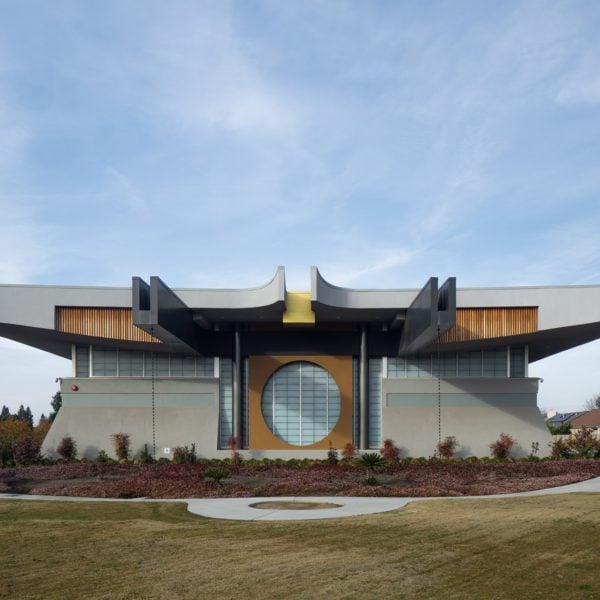We’ve selected eight buildings in the western United States by architects in the American School that are featured in the Outré West exhibition in Oklahoma.
The works feature in an exhibition called Outré West: The American School of Architecture from Oklahoma to California at the Oklahoma Contemporary Arts Center in Oklahoma City, which examines the work of post-war architects including Bruce Goff.
Goff and his contemporaries shaped what would come to be called the American School of Architecture in Oklahoma, creating “outsider” architecture in the western United States, especially in California.
“The buildings never look like those around them”
The exhibition features on originators Goff and Herb Greene and traces their unique style through the work of a number of their students. The buildings are remarkable for their uniqueness, simple materials and contextual relationship to their sites.
“The contextualism of the American School is a particular one; the buildings never look like those around them,” the exhibition’s co-curator Stephanie Pilat told Dezeen.
“Sometimes they don’t look like any buildings we’ve seen before, but they always relate sensitively to their site, the landscape, the climate, prevailing winds and contexts. They are inextricably connected to the places in which they are built.”
This was in contrast to the dominant strains of architecture at the time in the United States, which focused on importing practices of European modern schools such as the Bauhaus.
“The idea that a genuinely American school of architecture, freed from the cultural influence of Europe could be worthy of study was heretical at that time,” said Pilat.
“So from the beginnning the American School was never given full consideration.”
Whereas other schools of architecture in the US emphasized French Beaux-Arts and, later, German Bauhaus models of education, the American School allowed students the freedom to develop land- and client-centered architecture that was unlike anything that had been seen before,” added co-curator Angela Person.
California architect Marco Piscitelli was also among the curators, and many of the works featured were constructed in that state.
Read on for eight buildings that came out of the American School:
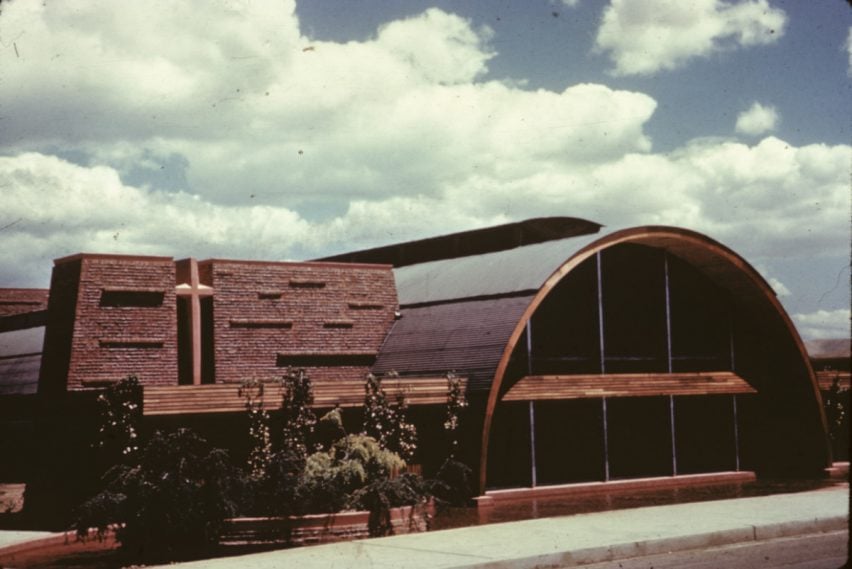
Camp Parks McGann Memorial Chapel, California, by Bruce Goff 1944
One of Goff’s earliest projects, completed before his tenure at Oklahoma University (OU), the chapel showcased a unique style using many natural materials.
It featured a massive arch reminiscent of a Quonset hut, with brickwork and wood placed on the facade.
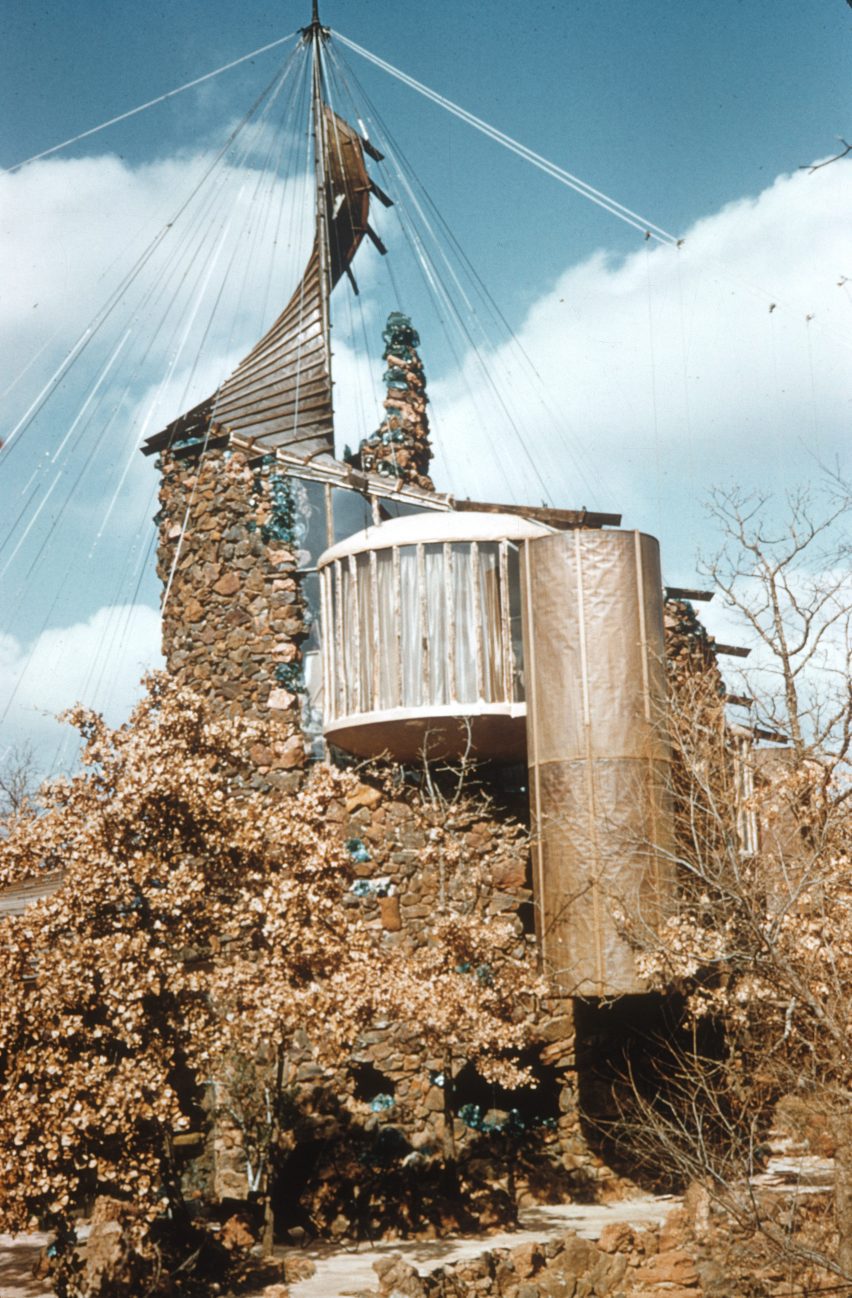
Bavinger House, Oklahoma, by Bruce Goff and OU Students 1955
Designed for two artists that worked at OU, Bavinger House was built using local, found and scrap material over a number of years and features an asymmetric form with flagstone towers from which cable supports were hung to support the roof.
Inside, there were pools and planting beds and the bedrooms were “hung” from inside the cavernous internal space. Unfortunately, it was demolished in 2011.
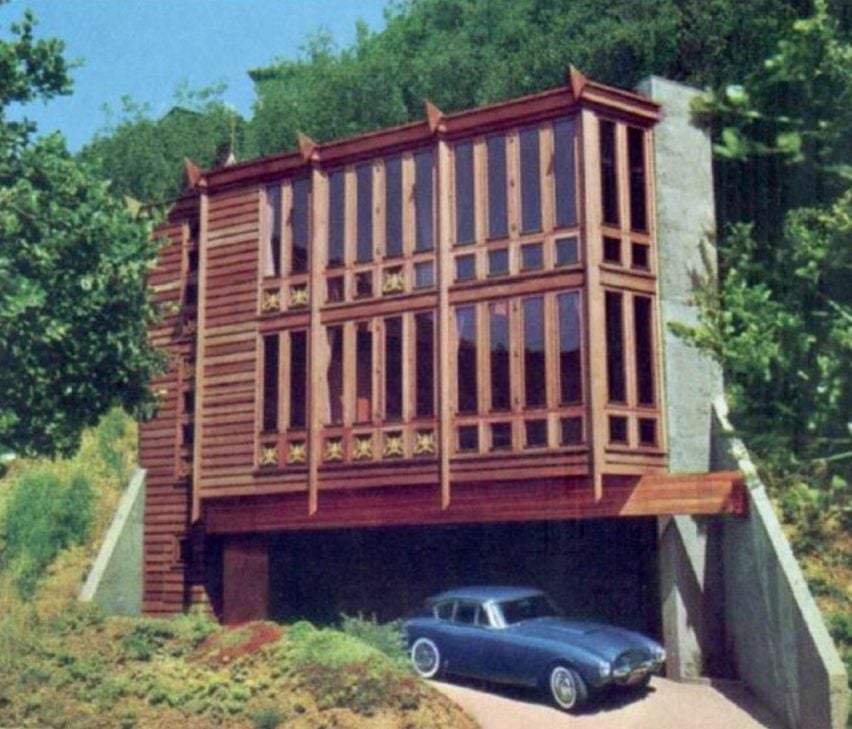
Autumn Residence, California, by Violeta Autumn 1959
A student of Goff, Violeta Autumn designed a house for herself on a steep site in California.
It featured a facade of redwood and Douglas fir and had cork floors. A copper-hooded fireplace stretched the height of the two-storey central living space.
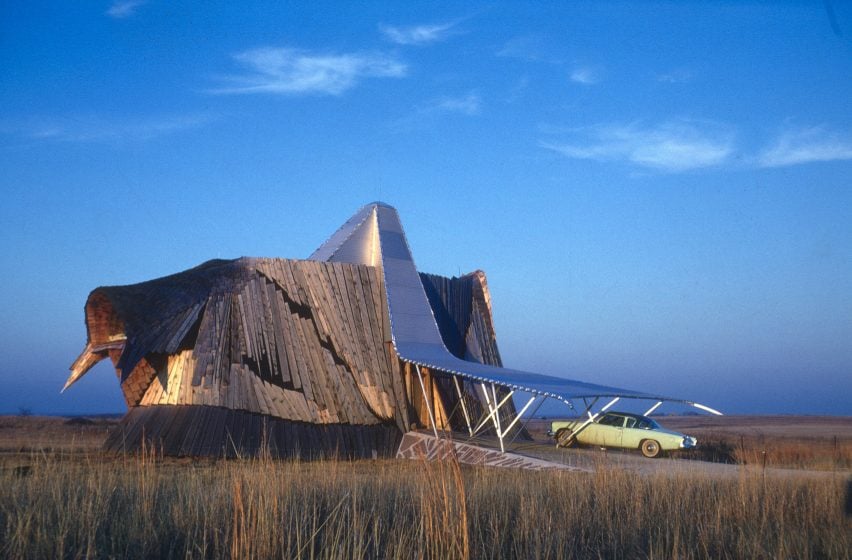
Prairie House, Oklahoma, by Herb Greene 1960
Greene designed this house for himself and his family, cladding the exterior with rough cedar boards and shakes and including a long metal entry canopy that connects with a structural core.
Cedar shakes continued inside and covered many of the interior surfaces. The design was informed by the prairies in Oklahoma as well as John Hurtig’s drawing series A Cathedral for the Religion of Architecture.
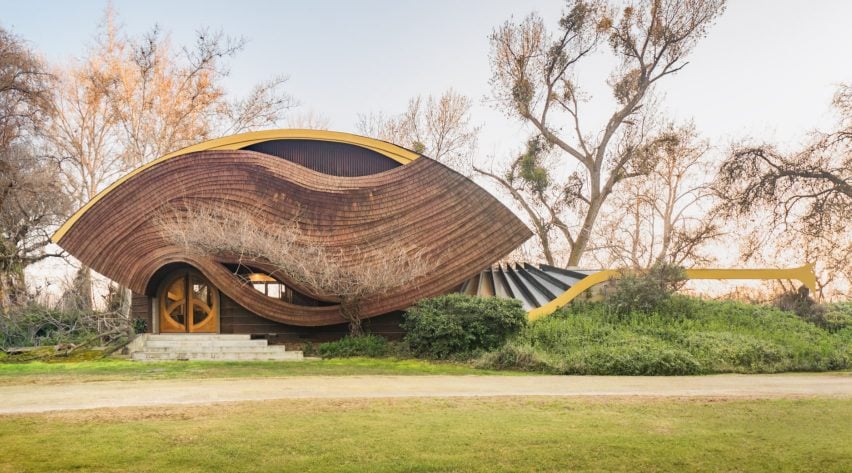
Lencioni Residence, California, by Arthur Dyson 1985
This home in Sanger, California has come to be called “The Hobbit House”.
Designed in partnership with its inhabitants it has an undulating shingle-clad form and expressive yellow-painted metal fins.
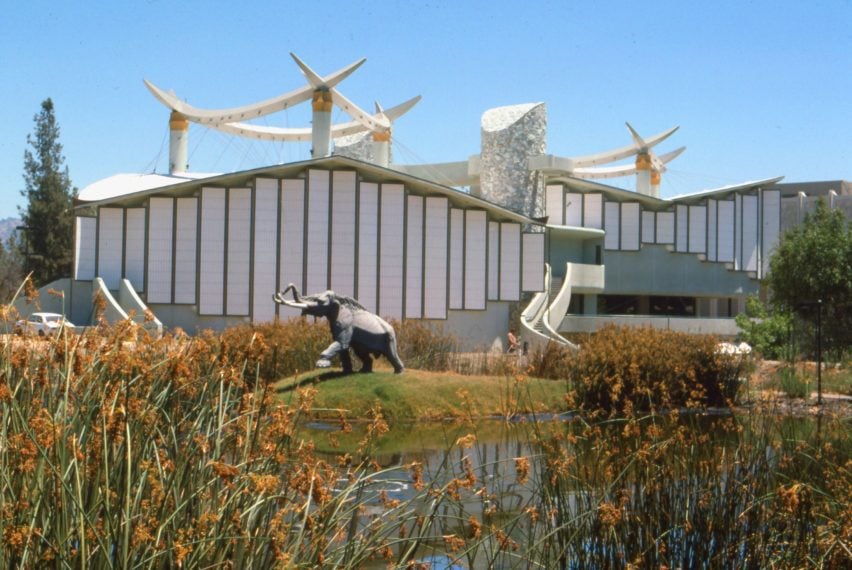
Japanese Pavilion at LACMA, California, by Bruce Goff 1988
Goff’s last project was completed by Bart Prince after his death. It features convex walls and structural beams that resemble tusks from which the roof was suspended with wires.
The white cladding on the exterior is Kalwall, a material that allows light to enter in a way similar to paper screens common in Japanese architecture. According to LACMA, a renewal project is underway for the pavilion.
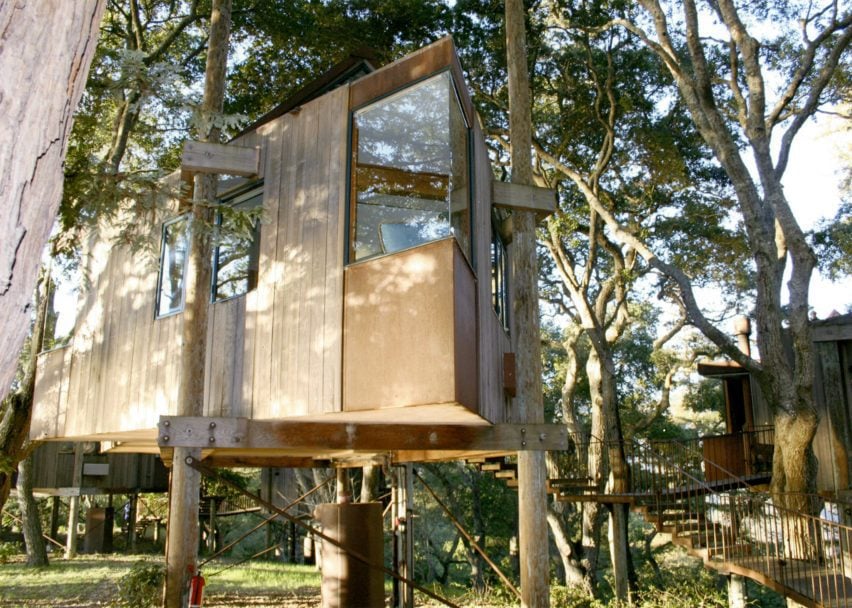
Post Ranch Inn, California, by Mickey Muennig 1992
According to the curators, Muennig slept on the wooded site during the design process of several different guest structures that formed the inn.
Simple wooden structures were lifted off the ground in some places, while in others they were “carved” into a cliffside on the site.

Fresno Betsuin Buddhist Temple, California, by Arthur Dyson 2022
This temple in California has a massive upsloping roof with decorative rain spouts and wooden elements.
Inside is a large worship space and a columbarian – a wall of niches where urns are stored.
Outré West: The American School of Architecture from Oklahoma to California is on show at Oklahoma Contemporary Arts Center from 22 August 2024 to 27 January 2025. For more exhibitions, events and talks in architecture and design visit Dezeen Events Guide.

